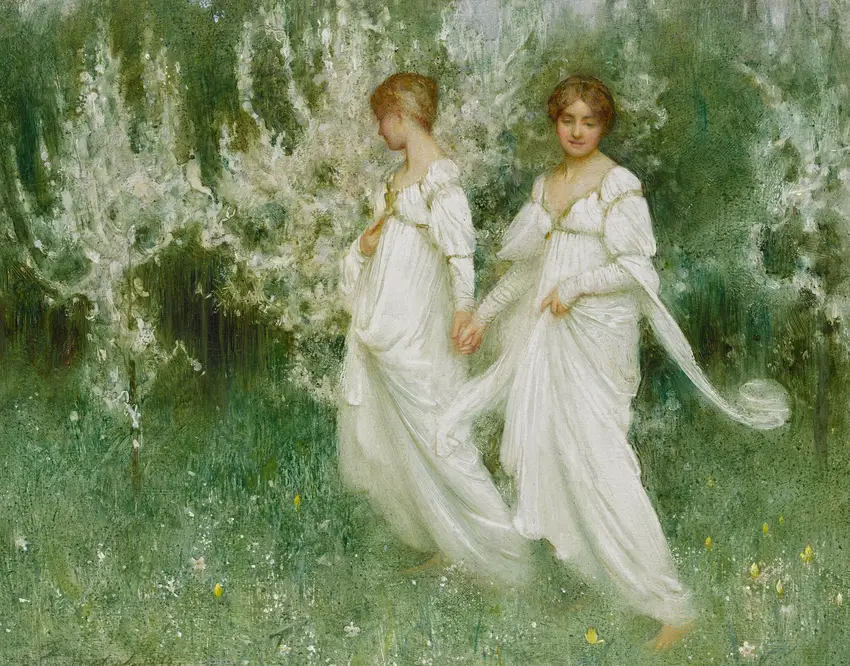Claude Monet’s *The Parc Monceau* (1878) captures the fleeting beauty of light and nature in a bustling Parisian park. Dappled sunlight filters through the trees, casting playful shadows on the winding paths and lush greenery. Monet’s loose, expressive brushstrokes evoke a sense of movement, as if the leaves themselves are rustling in the breeze. The painting feels alive, almost breathing, with its vibrant palette of greens, blues, and soft yellows. Figures stroll leisurely, their forms blurred yet full of life, blending seamlessly into the surroundings. It’s a moment frozen in time, yet brimming with energy—a testament to Monet’s mastery of impressionism.
What makes this work particularly fascinating is how Monet transforms an ordinary urban park into a dreamlike escape. The composition draws the eye inward, past the towering trees and toward the distant glow of sunlight. There’s a quiet intimacy here, as if the viewer has stumbled upon a hidden corner of the world. Unlike his later, more abstract works, *The Parc Monceau* retains a delicate balance between realism and impressionistic flair. It’s neither entirely grounded nor wholly ethereal—just a fleeting glimpse of beauty, caught mid-dance between light and shadow.


-full.webp)
-full.webp)
-full.webp)
-full.webp)

-full.webp)
-full.webp)
 (1903)-full.webp)